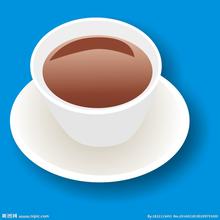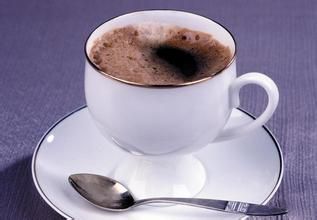Fine Coffee Hawaiian Kona Coffee Flavor Taste Manor Introduction Hawaiian Coffee Bean
Hawaii's coffee industry has to compete for space with expanding tourism. Most coffee is grown on the slopes of Mauna Loa. Mauna Loa was originally a volcano located in the western part of the Kona region of Hawaii. The length of the coffee producing area is about 30 kilometers, and its cultivation area is mainly concentrated in the north and south of the area. Coffee trees are grown in relatively inhospitable areas, but the soil is fertile and contains volcanic ash. Although it takes a lot of physical work to start growing and is difficult to manage, it is comforting to know that Kona coffee trees (at least those growing above 90 metres) seem to be immune to any pests and diseases, but to the regret of coffee fans, only about 1400 hectares produce Kona coffee. And because of Hawaii's high income levels and high tourist numbers, Kona coffee is so expensive that even "konablend"(no more than 5% kona) is sold. In recent years, neighboring islands such as maui, kauai and molokai have also begun to grow coffee commercially. Hawaiian coffee-kona coffee Hawaiian coffee beans Although Hawaii is often affected by tornadoes, the climate conditions are very suitable for coffee cultivation. There is plenty of rain and sunshine here, and there is no worry about frost. In addition, there is a strange natural phenomenon called "free shade." On most days, around 2 p.m., white clouds appear in the sky, providing the coffee trees with the shade they need. In fact, it is the natural conditions that make Kona produce more Arabica coffee than any other plantation in the world, and maintain a high quality, unique growth and climate to create a stronger coffee flavor. For example, coffee yields 560- 900 kg/ha in Latin America and 2240 kg/ha in Kona

Important Notice :
前街咖啡 FrontStreet Coffee has moved to new addredd:
FrontStreet Coffee Address: 315,Donghua East Road,GuangZhou
Tel:020 38364473
- Prev

Colombia Coffee Introduction Colombia Coffee Features Colombia Coffee Estate
Colombia is the world's second largest coffee producer, producing 12% of the world's total production, although ranked lower than Brazil, but its coffee beans are of good quality. Coffee trees are cultivated in upland areas and cultivated in small areas. Cautiously harvested and processed by washing, the coffee produced is beautiful and fragrant, and is suitable for drinking alone or mixed. The main species is Supremo Colomb.
- Next

Introduction of Sumatran Coffee Flavor in Sumatran Coffee producing area
Sumatra runs from northwest to southeast, intersects the equator in the middle, and consists of two areas: the Barisan Mountains Mountains in the west and the marshes in the east. The western half of the mountain runs through, the steep Barisan mountain range runs from northwest to southeast, stretching 1600 kilometers, there are more than 90 volcanoes, of which the highest peak, Mount Kerinci, reaches 3800 above sea level.
Related
- Detailed explanation of Jadeite planting Land in Panamanian Jadeite Manor introduction to the grading system of Jadeite competitive bidding, Red bid, Green bid and Rose Summer
- Story of Coffee planting in Brenka region of Costa Rica Stonehenge Manor anaerobic heavy honey treatment of flavor mouth
- What's on the barrel of Blue Mountain Coffee beans?
- Can American coffee also pull flowers? How to use hot American style to pull out a good-looking pattern?
- Can you make a cold extract with coffee beans? What is the right proportion for cold-extracted coffee formula?
- Indonesian PWN Gold Mandrine Coffee Origin Features Flavor How to Chong? Mandolin coffee is American.
- A brief introduction to the flavor characteristics of Brazilian yellow bourbon coffee beans
- What is the effect of different water quality on the flavor of cold-extracted coffee? What kind of water is best for brewing coffee?
- Why do you think of Rose Summer whenever you mention Panamanian coffee?
- Introduction to the characteristics of authentic blue mountain coffee bean producing areas? What is the CIB Coffee Authority in Jamaica?

